volatility, uncertainty, complexity, ambiguity (VUCA)
description: an acronym used to describe or reflect on the volatility, uncertainty, complexity and ambiguity of general conditions and situations
18 results
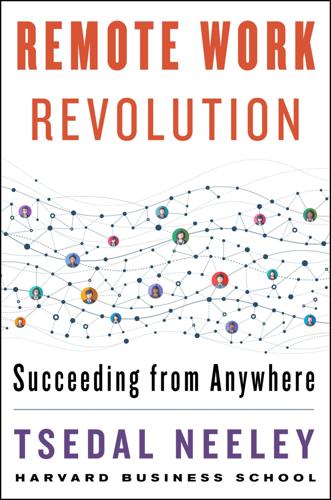
Remote Work Revolution: Succeeding From Anywhere
by
Tsedal Neeley
Published 14 Oct 2021
See also global teams agile remote teams and, 89, 107 cultural differences in, 78–79 digital tools for, 64 history of, 46 interaction norms of, 9–10, 13, 145 internal social media tools and, 80 launch sessions and, 3 location challenge and, 135–36 productivity and, 46–47, 52 resources and, 8 subgroups of, 136 work routines and, xvi, xvii Dorsey, Jack, xiii Edmondson, Amy, 13 efficiency, 69, 74, 99 emails communication and, 61–62, 63, 64, 65, 77, 105 cultural differences and, 78, 79 mutual knowledge problem and, 66–67 empathy psychological distance reduced by, 117, 127, 129 reflected knowledge and, 31–32, 38 employee performance, in remote work programs, xiii, 134, 143, 149 engagement challenge in leadership, 134, 144–48, 149 linguistic differences and, 122–23, 128–29 rules of engagement, 119, 124 Facebook, xii face-to-face interactions agile teams and, 87, 88, 89, 92, 96, 98, 101 cultural differences and, 79 daily stand-up meetings and, 103–4 direct knowledge and, 30 emotional trust and, 34, 37 engagement challenge and, 147 leaner to richer media and, 72–73 social presence problem and, 67–69, 83 team cohesion and, 56 transition time and, 63 trust and, xiv, 21, 23, 27 work hours and, 105 facilitating, mutual teaching, 126, 127–28 faultlines, in team cohesion, 138–42 federal government, remote work format for, 49–50 feedback anonymous feedback, 106 flexibility, of agile teams, 87, 90 flexibility of remote workers productivity and, 40, 46–47, 51–52, 58 work-family conflicts and, 54 Foroughi, Cirrus, 49 framing the situation, for global crises, 153, 156, 160–63, 164, 172 Frei, Frances, 133–34 Gantt, Henry, 86 Gartner, Inc. xii gender, faultlines of, 138, 139 geographical proximity, xiv, 136, 169 geographic isolates, 136, 148 geography, as variable in faultlines, 138 global crises action exercises, 187–89 country-of-origin effect and, 153, 158–60 COVID-19 as, 152, 153, 169–71 framing the situation, 153, 156, 160–63, 164, 172 generating solutions with diverse minds, 163–67, 168, 169 immediate action for, 156, 167–69, 172 leadership responses to, xv, 152, 156, 169–72 panoramic awareness development, 156–58, 161, 172 ripple effect on business environment, 151–53 VUCA (volatility, uncertainty, complexity, ambiguity) and, 153–56, 157 Global Leadership Aptitude, 156 global teams action exercises, 184–85 agile teams and, 89, 92 ambiguity in challenges, 155 causes of failure in performance, 111–14 collaboration and, xiv cross-cultural mutual adaptation and, 120, 121, 124–28 cultural differences and, 78–79, 109–10, 114, 120–21, 124–28 growth in, xi–xii, xv, xvii inclusive conversations in meetings, 121–24 internal social media tools and, 80 leadership of, 111–14, 120, 121–28 leveraging positive differences, 119–21, 129 linguistic differences and, 110, 111, 113, 114, 117–24, 128–29 psychological distance and, 111, 116, 121, 126, 127 Google, 96 Google Chat, xi Google Docs, 102 group culture, for virtual interactions, 32 Groupe PSA, xiii group-level identity, 141–42, 148 Hackman, J.
…
Centers for Disease Control, 161–62 “us versus them” challenge, in leadership, 134, 138–42 values cultural differences and, 110 emotional trust and, 24 internalizing of, xvi videoconferences cultural differences and, 79 for daily stand-up meetings, 103–4, 107 as instant mode of communication, 62 psychological distance and, 117 screen sharing for, 104, 107 social dynamics shaped by, 64 social presence problem and, 74, 99 tech exhaustion from, xiv, 63–65, 83, 98 transition time and, 63–64 virtual whiteboards, 104, 107 voice over IP, 62 volatility, 153–54 VUCA (volatility, uncertainty, complexity, ambiguity) in global crises, 153–56, 157 ripple effects of, 152–53, 157 Walker, Jon, 95–96 Welde, Rahul, 93–94 word clouds, 106 work-family conflicts, 51–52, 53, 54–55, 105 Workhuman, 15–16 work tasks ongoing communication on, 12 solo tasks, 101–2 task conflict, 13 task loads, 8 Wuhan, China, 162 Zoom, xi About the Author TSEDAL NEELEY is the Naylor Fitzhugh Professor of Business Administration at the Harvard Business School.
…
Throughout the chapter you will follow the story of how Molinas and her team learned to successfully meet the crisis of their plummeting performance and then about Molinas’s leadership to meet the revolutionary changes that COVID-19 brought to the world. VUCA: THE WAY WE LIVE NOW In an era of globalization, companies must function in a world with VUCA. Adapted from a term used by the U.S. Army War College to describe the environment that military leaders must operate within, VUCA today can apply to conditions such as a market crash, a natural disaster, or a public health crisis. VUCA is a constant in the world in which we now live. Although what follows may sound familiar, having the vocabulary and a fuller comprehension of the way the world currently exists is a first step in figuring out how you can best meet its considerable challenges.

The Great Wave: The Era of Radical Disruption and the Rise of the Outsider
by
Michiko Kakutani
Published 20 Feb 2024
Bachman, adapted for ebook Cover design: Yang Kim Cover image: Katsushika Hokusai, The Great Wave Off the Coast of Kanagawa (altered), c. 1829–1831, Fine Art Images/Heritage Images/Getty Images ep_prh_6.2_146171367_c0_r0 CONTENTS Introduction Chapter 1 A Hinge Moment: Morbid Symptoms, Cascading Crises, and a Looming Paradigm Shift Chapter 2 Pirates and the New Frankenstein: How Outsiders Toppled the Status Quo and Unleashed a Tsunami of Unintended Consequences Chapter 3 Culture in the New Millennium: When the Edges Replaced the Center Chapter 4 Broken Windows and Sliding Doors: How Radicals Smashed the Overton Window Chapter 5 The Resistance Strikes Back: The New Grassroots Activism and the Power of Disruption Chapter 6 Outlaw Nation: America’s Love-Hate Affair with Outsiders Chapter 7 The Centrifugal Republic: Why Hackers, Politicians, and Business Leaders Embraced Decentralization Chapter 8 Optimizing Marginality: Outsiders and Outside-the-Box Thinking Chapter 9 Resilience in the Vuca-Verse: Coping with Volatility, Uncertainty, Complexity, and Ambiguity Epilogue Notes Additional Sources _146171367_ INTRODUCTION The Great Wave—It’s one of the best-known and most widely reproduced images on the planet, an image that embodies the feelings of dread and hope that come with swift, unpredictable change.
…
By juxtaposing the ominous swell of the ocean with the serene presence of Mount Fuji in The Great Wave, Hokusai captured both the risks of daily life and the possibility of transcendence, the dynamic between foreboding and harmony, motion and stillness, chaos and transformation. * * * — The great wave of change breaking over today’s world is sweeping away old certainties and assumptions and creating an inflection point of both opportunity and danger. A confluence of crises, both immediate and long-term, has made the military acronym VUCA—meaning volatility, uncertainty, complexity, and ambiguity—feel like a perfect description of the third decade of the third millennium. The term was used at the Army War College in the late 1980s to describe a world that was more unpredictable than the bipolar one of the Cold War era, but it has come to feel increasingly resonant today, as one emergency—from COVID, to the January 6 insurrection, to Putin’s invasion of Ukraine—cascades into another, as an increasingly interconnected globe amplifies the “butterfly effect” famously described by Ray Bradbury in the story “A Sound of Thunder.”
…
No wonder the present feels so bewildering and calamitous that many of us are reaching to dystopian fiction to describe our predicament—1984, Do Androids Dream of Electric Sheep?, Neuromancer, 2001: A Space Odyssey, The Handmaid’s Tale, It Can’t Happen Here. Potent new dynamics are at work in this VUCA-verse, where technology is creating new asymmetries of power, and the process of disruption is driving change in politics, business, and technology. People are losing faith in old, top-down systems, and decentralized models of organization are being embraced by activists and entrepreneurs alike. In this ecosystem, more and more energy is moving from the margins toward the center, from the grassroots upward, from start-ups, protesters, and outsiders—a kind of countermovement to Big Tech’s monopolistic consolidation of power and the efforts of authoritarian leaders to centralize power in their own hands.
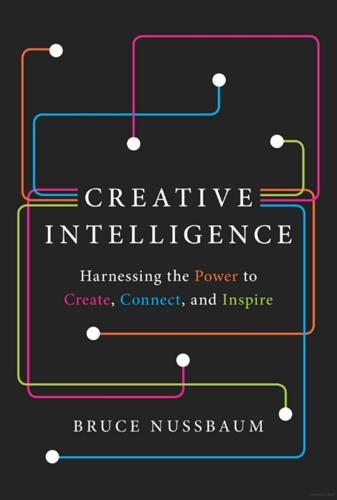
Creative Intelligence: Harnessing the Power to Create, Connect, and Inspire
by
Bruce Nussbaum
Published 5 Mar 2013
The US military’s term for the kind of environment is VUCA—“Volatile, Uncertain, Complex, Ambiguous.” The acronym came out of the US Army War College in the late nineties to describe the new operating conditions that world military leaders had to face—the rise of terrorism, global political instability, and asymmetrical warfare. It’s a term that also perfectly captures the prevailing instability of society in general. While the risks the average American faces certainly are less deadly, I’ve found no better way of describing the current economic landscape than VUCA. Change in life is a constant, but shifts in our industries or career paths usually come episodically, giving us time to adapt to them.
…
Keith Sawyer, Group Genius: The Creative Power of Collaboration (New York: Basic Books, 2007). 30 Where the older model sought: “Innovation for the Risk Averse,” Harvard Business Review, May 2012. 31 Washington has to curry: Nicole Bullock and Vivianne Rodrigues, “Scramble to Sell US Debt as Yields Hit Record Lows,” Financial Times, March 6, 2012, accessed September 12, 2012, http://www.ft.com/cms/s/0/04 ab95a6-66e3-11e1-9e53-00144feabdc0.html #axzz20oSyTu99. 32 In 2010, for the first time: “World Demographic Profile 2012,” http://www.indexmundi.com/world/ demographics_profile.html, accessed September 16, 2012. 32 In forty more years: http://www.npg.org/facts/world_pop_year.htm, accessed October 18, 2012. 32 The US military’s term: Carol Mase, “VUCA—A Leadership Dilemma,” Free Management Library Leadership Blog, January 17, 2011, accessed September 12, 2012, http://managementhelp.org/blogs/leadership/2011/01/17/vuca-a-leadership-dilemma. CHAPTER 3 43 commencement speech at Stanford: Steve Jobs, text and video of Stanford commencement address, June 12, 2005, posted on the Stanford Report, June 14, 2005, accessed September 4, 2012, http://news.stanford.edu/news/ 2005/june15/jobs-061505.html. 45 Roommates Adam Lowry: I first met Josh Handy at a Design Management Institute conference on October 25 to 27, 2010, in Providence, Rhode Island, that I cochaired with David Butler, Design Director for Coca-Cola.
…
Change in life is a constant, but shifts in our industries or career paths usually come episodically, giving us time to adapt to them. Sometimes, however, the frequency and volatility of change happen at an unusual rate—that’s where we find ourselves today. While it can be scary, we should take note from the military that VUCA landscapes also present unusual opportunities to do things differently. It will take not only new strategies, but a new way of thinking, communicating, and creating. We were trained to deal with a world of predictable futures, but the future—both the good and the bad—is anything but predictable. We’re living in an “I don’t know” world where we can’t fathom the problems to come, much less the answers.

Brave New Work: Are You Ready to Reinvent Your Organization?
by
Aaron Dignan
Published 1 Feb 2019
keep temporary workers longer: “The Story of FAVI: The Company That Believes That Man Is Good,” European Workplace Innovation Network, http://uk.ukwon.eu/File%20Storage/5160692_7_The-story-of-favi.pdf. almost 1,000 percent since 2004: Google Trends, s.v. “VUCA,” accessed September 1, 2018, https://trends.google.com/trends/explore?date=all&q=VUCA. 1978 has used anything but the flop: 12th IAAF World Championships in Athletics, “IAAF Statistics Handbook, Berlin 2009” (Monte Carlo: IAAF Media & Public Relations Department, 2009), 554–55. Studies show you probably won’t: William Samuelson and Richard Zeckhauser, “Status Quo Bias in Decision Making,” Journal of Risk and Uncetainty 1 (1988), 7–59, https://sites.hks.harvard.edu/fs/rzeckhau/status%20quo%20bias.pdf.
…
To be People Positive is to assume and expect the best of everyone. COMPLEXITY CONSCIOUS What does it mean to be Complexity Conscious? If you ask executives why the old ways don’t work as well as they used to, you’ll hear one response more than any other: complexity. Google searches for the term “VUCA”—an acronym that stands for volatility, uncertainty, complexity, and ambiguity—are up almost 1,000 percent since 2004. These words seem to show up in almost every board meeting, earnings call, and leadership retreat. Somehow, complexity has become a catchall for our problems. Subprime mortgage crisis?
…
L. and Associates, 16, 69–70, 79, 142 Gorilla Glass, 103 Gould, Stephen Jay, 103 governance meetings, 122 governing constraints, 46 Gower, Bob, 222 Graham, Benjamin, 30 Graham, Paul, 230 Grant, Adam, 142 gratitude, 148 Gray, Dave, 196 G Suite, 135 Haier, 76, 80 Hamel, Gary, 26 Hammond, Robert, 188 Handelsbanken, 13, 94, 227–28 Hansson, David Heinemeier, 68–69 Harrison, Scott, 224–25 Hawk, Tony, 259 healthcare industry, 34–35 Buurtzorg in, 13, 34–36, 38, 79, 105, 144, 218 Heath, Chip and Dan, 212 Heppner, Frank, 46 Herzberg, Frederick, 165 hierarchies, 77–78, 258 High Line, 188 Hillaker, Harry, 88 Hillman, James, 36 hiring, 79, 142–43 Hoffman, Reid, 88 Holacracy, 71, 122, 202 HolacracyOne, 89 Human Side of Enterprise, The (McGregor), 39–41 Husney, Jordan, 89 Huxley, Aldous, 22 hygiene factors, 165, 173 ICBD (Intentions, Concerns, Borders, and Dreams), 222–23 IDEO, 142–43 incentive compensation, 171–72 Indie.vc, 253–54 influence, 78 information, 14, 54, 127–37 information symmetry, 130, 134, 170, 190 initial public offerings (IPOs), 254, 255 Innosight, 29 innovation, 14, 54, 102–9, 188 innovator’s dilemma, 91 integration vs. functions, 79–80 Integrative Decision Making (IDM), 71–73 internet, 84, 131 Intrinsic Motivation (Deci), 42 investment, 251–55 James, LeBron, 143, 172 Jamieson, Alex, 222 Jobs, Steve, 103 job satisfaction, 165 Johnson, Steven, 189 Joint Special Operations Command (JSOC), 128–29, 130 Kahneman, Daniel, 165 Kanigel, Robert, 22 Kegan, Robert, 152–53 knee-jerk reactions, 28 Kotter, John, 186 KPMG, 32 Kroger, 59 Kroghrud, Ivar, 147 labor productivity growth, 33–34 Lahey, Lisa, 152–53 Laloux, Frederic, 105 language, 217 Lasseter, John, 191 lattice organizations, 142 leader, role of, 223–28 leadership gap, 166 Leading Change (Kotter), 186 Lean Change Management (Little), 201 Lean Startup method, 107–8 learning, 152, 153, 156–57, 160, 162, 200 by doing, 230–31 faster, 88 games and activities for, 200 retrospectives and, 123–24 validated, 108 Legacy Organizations, 5, 21, 38, 47, 59, 237, 258 authority in, 66 decision making in, 69 information in, 129, 131 measurement in, 60 membership in, 140 operating systems of, 12 performance targets and, 97 strategy in, 86 liminal space, 196, 197, 201 Little, Jason, 201 Little Book of Beyond Budgeting, The (Morlidge), 96–97 locus of control, 154, 155 Long-Term Stock Exchange (LTSE), 254–55 looping, 193, 201–16, 229, 236 and conducting experiments, 213–16 and proposing practices, 207–12 and sensing tensions, 202–6 Lyft, 169 Machiavelli, Niccolò, 248 Made to Stick (Heath and Heath), 212 management, 26–27, 81 innovations in, 20 open-book, 130 org charts for, 7–9, 24, 77, 78, 81, 114, 189 market pay, 167–68 Marquet, David, 67 Maslow, Abraham, 38 Masters of Scale, 88 mastery, 14, 54, 151–62 maturity, 154, 155–56, 255–56 McChrystal, Stanley, 128–29, 130, 197 McGregor, Douglas, 39–41, 158 McKeown, Greg, 62 McKinsey, James O., 24–25, 95 McKinsey & Company, 24, 32, 143, 187 Medium, 84–85, 86 meetings, 3–4, 6, 119 moratorium on, 123 in OS Canvas, 14, 54, 118–26 structures in, 124–25 membership, 14, 54, 138–50 mergers and acquisitions (M&A), 32, 33 metrics, 60–61 Meyer, Erin, 258 Microsoft, 170 microwave, 103 Mindset (Dweck), 154 mindsets: fixed and growth, 154–55 see also Complexity Conscious mindset; People Positive mindset minimum viable policy, 68–69 Mitchell, Melanie, 129 Mitra, Sugata, 257 Morlidge, Steve, 96–97 Morning Star Company, 13, 55–56, 99, 168 motivation, 41–42, 64, 74, 165, 173 multiplayer software, 135 Münsterberg, Hugo, 25 murmuration, 194 Netflix, 113, 167–68, 219 Netscape, 59 networks, dynamic, 77–78 New York Summit, 147 New York Times, 147, 165 Nietzsche, Friedrich, 179 noncompete clauses, 144 Office of Strategic Services, U.S., 6–7 Ohno, Taiichi, 20, 111 OKR (objectives and key results), 87–88 Oktogonen Foundation, 94 Olympic basketball team, U.S., 172 one-on-ones, 121–22 OODA loop, 88, 90 Operating Manual for Spaceship Earth (Fuller), 247 operating system, organizational (OS), 12–13, 17, 18, 43, 215 agility and, 19 changing, see change economic, 246–47, 248 evolutionary, see Evolutionary Organizations management innovations and, 20 Operating System Canvas (OS Canvas), 14, 53–57 authority, 14, 54, 63, 65–74 compensation, 14, 54, 163–73 how to use, 174, 270–72 information, 14, 54, 127–37 innovation, 14, 54, 102–9, 188 mastery, 14, 54, 151–62 meetings, 14, 54, 118–26 membership, 14, 54, 138–50 purpose, 14, 54, 68–64, 67, 85 resources, 14, 54, 93–101 strategy, 14, 54, 83–92 structure, 14, 54, 75–82, 111 workflow, 14, 54, 110–17 operating systems, 9 for traffic flow, see traffic flow organizational debt, 27–29, 91 organizations, 255 agility in, 19, 20, 28–29 as complex systems, 45, 187–88 cooperatives, 250 decentralized autonomous, 250–51 entry/exit rates of, 33 evolutionary, see Evolutionary Organizations governance of, 122 investment and, 251–55 lattice, 142 legacy, see Legacy Organizations longevity of, 29–30 mergers and acquisitions, 32, 33 new forms of incorporation, 248–51, 252 operating systems of, see operating system, organizational org charts, 7–9, 24, 77, 78, 81, 114, 189 return on assets of, 31, 32 as set of membranes, 139–40 three structures of, 78 OS Canvas, see Operating System Canvas Ostrom, Elinor, 98 over statements, 89 Page, Larry, 136 Patagonia, 85, 130–31, 133, 249, 259 pay, see compensation People Positive mindset, 13, 36–43, 53, 55–57, 190, 195, 199, 244, 258–59, 267 authority and, 74 compensation and, 173 information and, 137 innovation and, 109 mastery and, 162 meetings and, 126 membership and, 150 purpose and, 64 resources and, 101 strategy and, 92 structure and, 82 workflow and, 117 Percolate, 131–32 performance, 46 individual, 158–60, 172 Petrarch, 224 Pflaeging, Niels, 78, 180, 189–90 Pixar, 119–20, 191–92 planning, 91, 95, 96, 100 see also strategy Plato, 3 Play-Doh, 103 polycentric governance, 98 PopSugar, 135 practices, proposing, 207–12 priming, 193, 197–201, 236 Principles (Dalio), 152 Principles of Scientific Management, The (Taylor), 23–24, 29 priorities, 88–89 profit, 59–60 Project Aristotle, 221 projects, 113, 114, 117 management of, 112, 237 sprints and, 115, 237–38 status of, 121, 132 work in progress and, 115–16, 132 proposing practices, 207–12 psychological safety, 219–23, 236 purpose, 14, 54, 68–64, 67, 85 push vs. pull, 131–32 Quaroni, Guido, 192 railroads, 8, 22–23 Raworth, Kate, 246–47 Ready, The, 17–19, 123, 125, 143, 149, 174, 190, 217 recruiting and hiring, 79, 142–43 Reddit, 135 red team, 90–91 REI, 85 Reinventing Organizations (Laloux), 105 relatedness, 42 relief, 236–37 reputation, 78 resistance, 233–34 resources, 14, 54, 93–101 retrospectives, 123–24 return on assets (ROA), 31, 32 Rework (Fried and Hansson), 68–69 Ries, Eric, 107–8, 254, 255 risk, 68, 122, 132, 231 barbell strategy and, 86–87, 105–6 ritual, 143 Robertson, Brian, 202 Rogers, Carl, 38 roles, 72, 77, 80, 81, 111, 141, 157 decision making and, 72, 73 mixing of, 157–58 Rotter, Julian B., 154 roundabouts, 10–12, 13, 47, 55 Ruimin, Zhang, 76 Russell, Bertrand, 247 Ryan, Richard, 42 sabotage, 5–7 safety, psychological, 219–23, 236 Sahlberg, Pasi, 12 Saint-Exupéry, Antoine de, 212 salary, 164, 165, 168 see also compensation Salary.com, 170 Salesforce, 119 S&P 500, 29–30, 60 Santa Fe, USS, 67 Santa Fe Institute, 29 scaling change, 234–39 scenario planning, 90 Schaar, Tom, 259 Scientific Management, 22–24, 26, 48 Scott, Kim, 120 scribes, 122–23 Securities and Exchange Commission (SEC), 104, 255 self-determination theory, 42 self-employment, 33 self-evaluation, 154 self-management, 16–17 self-set pay, 168 Semler, Ricardo, 245, 258 Seneca, 189 Senge, Peter, 153, 202 sensing, 202–6, 231–32 signal-controlled intersections, 9–12, 13, 46, 55 Simple Sabotage Field Manual, 7 Sinek, Simon, 222 Sisodia, Raj, 60 Slack, 119, 134, 135 SLAM teams, 80 Snowden, Dave, 156, 188–89 Sociocracy, 70–71, 122 space: creating, 224–26, 228 holding, 226–28 liminal, 196, 197, 201 Spencer, Percy, 103 Spotify, 112–13, 160, 218 spread, 217–18 sprints, 115, 237–38 standards vs. defaults, 106–7 Starbucks, 85 startups, 27–28, 33, 76–77, 107, 197, 254 Lean Startup method, 107–8 status quo, 48, 90–91, 233 steering metrics, 60–61 stocks, 30–31 strategy, 14, 54, 83–92 strategy+business, 76 strategy review meetings, 3–4 structure, 14, 54, 75–82, 111 Svenska Handelsbanken, 13, 94, 227–28 Taleb, Nassim Nicholas, 86–88, 106 targets, 95, 97, 101 Taylor, Frederick Winslow, 21–24, 26, 29, 111, 153, 186, 257 teams, 79, 82, 113, 117, 141, 142, 172, 225–26 Ballpoint game for, 199–200 charters for, 144–45 dynamic, 81 gratitude and, 148 ICBD technique for, 222–23 red, 90–91 retrospectives and, 123–24 rituals and, 143 SLAM, 80 sprints and, 115, 237–38 status updates and, 121 teams of, 77, 197 work in progress and, 115–16, 132 technology, 256–57 TED, 128, 246, 257 telephone, 103 Teller, Astro, 49 tensions, sensing, 202–6 Tesla, Inc., 62, 86 Theory X and Theory Y, 39–41, 130 Thomison, Tom, 89 tipping point, 216 Torvalds, Linus, 132 Toyota, 20, 111, 235 TPG, 253 traffic flow, 9–12, 45 roundabouts for, 10–12, 13, 47, 55 signal-controlled intersections for, 9–12, 13, 46, 55 tragedy of the commons, 98 training, 6, 156–57 transparency, 129, 130–31, 134, 136, 190, 195, 258 compensation and, 168, 169–71, 173 radical, 152, 154 trust, 236 twenty percent time, 107 Twitter, 84 Urwick, Lyndall, 25 User Manual to Me, 147–48 value creation, 78, 111–14, 160 Valve Software, 66, 107 Vang-Jensen, Frank, 227 Vanguard, 48 venture capital, 253 Vrba, Elisabeth, 103 VUCA, 43 wages, 34, 166 see also compensation Wallander, Jan, 94, 227 Warby Parker, 96 waterline principle, 69–70, 72 Weber, Max, 25 WeWork, 87 Whole Foods, 59, 61, 170, 259 Wikipedia, 140 Williams, Ev, 84–85 workflow, 14, 54, 110–17 working in public, 132 work in progress (WIP), 115–16, 132 World War II, 6–7 Wright, Orville and Wilbur, 103 Y Combinator, 230 Zanini, Michele, 26 Zappos, 144 al-Zarqawi, Abu Musab, 129 Zobrist, Jean-François, 37, 42–43 Zuckerberg, Mark, 88 ABCDEFGHIJKLMNOPQRSTUVWXYZ About the Author Aaron Dignan is the founder of The Ready, an organization design and transformation firm that helps institutions like Johnson & Johnson, Charles Schwab, Kaplan, Microsoft, Lloyds Bank, Citibank, Edelman, Airbnb, Cooper Hewitt Smithsonian Design Museum, and charity: water change the way they work.
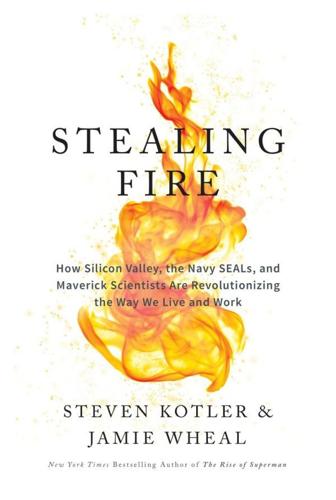
Stealing Fire: How Silicon Valley, the Navy SEALs, and Maverick Scientists Are Revolutionizing the Way We Live and Work
by
Steven Kotler
and
Jamie Wheal
Published 21 Feb 2017
SEALs constantly learn, improve and refine skills working with their teammates. Their office not only transcends the elements of Sea, Air and Land, but also international boundaries, the extremes of geography and the spectrum of conflict.” The technical term SEALs use to describe these conditions is VUCA—Volatile, Uncertain, Complex, and Ambiguous. Prevailing over this type of chaos requires an astounding level of cognitive dexterity. As Rich Davis explains: “the most expensive part of these already expensive warfighters is the three pounds of gray matter resting inside their skulls.” Of course, this isn’t how we normally think of SEALs.
…
So, in a stroke of desperate inspiration, Page and Brin found themselves turning to an unusual selection process, a brutal filtration system both strikingly similar to BUD/S and as wildly different as it could get. Like the SEALs’ infamous Hell Week, a finalist for Google’s CEO job would have to spend five nearly sleepless days and nights enduring oppressive sun, freezing cold, and a 24/7 barrage of VUCA conditions. Pushed to physical and psychological extremes, the prospective leader would have nowhere to hide. Would he retreat into himself? Or could he merge with the team? Of course, there were a few differences. Unlike the San Diego beach where BUD/S prospects prove themselves, the beach Page and Brin had in mind hadn’t seen flowing water in nearly fifteen thousand years.
…
Navy accelerated learning by, 27 and Al-Wazu raid, 9–12, 15–17, 23, 25 and altering mental states to enhance performance, 6, 22, 32 bonding among, 14–15 cost of, 12–17, 26 ecstasis of, 13–14, 15, 16, 17, 22–23, 25 and flow, 25 Hell Week of, 13, 19 job description for, 12–13 Kill House of, 14, 15, 25 and leadership, 14–15 macho culture of, 22–23 and Metni, 138 Mind Gym of, 26–27, 190, 192 and neurobiology, 108, 113 protocols for, 14–15 screening for, 15, 22, 26 switch of, 11–12, 14–17, 20, 25–27, 105, 138, 210 team focus of, 13–14, 16, 17 training of, 12, 13–14, 17, 22, 152 VUCA of, 13, 19 Searls, Doc, 20 Second Great Awakening, 178–79 self and AI, 101, 102 and altered states to altered traits, 90–93 awareness of, 37–39, 147–48, 222 and Carhart-Harris research, 125 and categories of ecstasis, 23–24 and flow, 4–5 losing too much of, 68 neurobiology and, 101, 102, 108, 110 neurotheology and, 108, 110 1940s and 1950s concept of, 77 “no-,” 152–53 pharmacology and, 118, 125 psychology and, 74 and seeing self from outside, 102 and sensory deprivation tanks, 26–27 and techniques of ecstasis, 24–25 testing/experimenting on, 120, 121, 123, 184, 207 true, 102 See also self-actualization; self-development; self-talk; selflessness self-actualization, 93 self-development and Altered States Economy, 30 ecstasis as tool for, 93 See also specific program self-talk, 37–38 selflessness and AI, 102 benefits of, 38, 42 and Carhart-Harris research, 125 “known issues”/downsides of, 202–3 and learning, 220 and misuses/dangers of ecstasis, 193 and neurobiology, 102 and open-sourcing ecstasis, 200 paradox of, 39 as STER category, 37–39, 45 and Tolle, 76 and training for nonordinary states, 202–3 See also STER Seligman, Martin, 90–91, 92, 174–75 Seligman, Nicki, 90–91, 92 sensors and AI, 101, 102 in everyday lives, 176, 177 and Google, 27 and marketing, 197 and neurobiology, 96, 101, 102 and technology, 147, 149, 150, 151 wearable, 147, 149, 150 sensory deprivation tanks, 26–27 serotonin, 20–21, 24, 42, 45, 89, 98, 112, 141, 217 “Seven Days of Sex” challenge, 86 sex amount of, 81 BDSM and, 84–85 and benefits of ecstasis, 222 brain pleasure system and, 183 at Burning Man, 157, 178 and categories of ecstasis, 23–24 counterculture and, 189 and hedonic calendaring, 214 human potential movement and, 79 Huxley’s views about, 199 kind of, 81–86 as kinky, 76, 81–86 online, 84 and “orgasmic meditation,” 82, 83 psychedelics and, 121 psychology and, 76, 81–86 and STER, 85 transcendent, 81–86 sexual revolution (1970s), 66–67 Sexualitics, 84 Shahar, Tal Ben, 175 Shamanism (Eliade), 57 Sheth, Anish, 85 Shirer, William, 69 Shulgin, Alexander “Sasha,” 119–25, 128, 131, 133, 145, 157–58, 184, 200, 201 Shulgin, Ann, 122, 123 Shutters Hotel (Santa Monica): meeting at, 103 Siegel, Mikey, 146–48, 150, 152, 157, 200 Siegel, Ronald K., 116, 117, 213 Silicon Valley and Burning Man, 159, 160 and Flow Dojo, 149–50 and Promethean upstarts, 4 See also Google; specific person or company Silva, Jason, 33–36, 38, 39, 41, 43, 44 singing, 57, 108, 141.
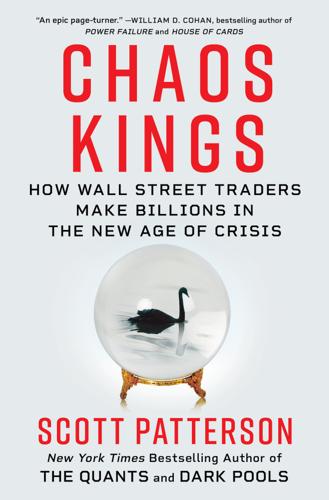
Chaos Kings: How Wall Street Traders Make Billions in the New Age of Crisis
by
Scott Patterson
Published 5 Jun 2023
If violence rose sharply in the U.S., historically that had a negative impact on Europeans traveling to America, which can hit an airline’s profitability. Fewer cars are sold after a terrorist attack. This is what happens to your supply chain if there’s another wave of Covid-19, etc. Using his AI machine, Schmalbach created the VUCA World Risk Index. VUCA is short for volatility, uncertainty, complexity, and ambiguity. Introduced in the late 1980s by the U.S. Army War College amid the fog-inducing end of the Cold War, VUCA has been adopted by multiple industries (and hordes of business-management consultants) as a model to help executives deal with crises and disasters. Schmalbach’s algorithm took the metric and automated it to measure risks such as pandemics, cybercrime, global warming, and terrorism.
…
See also Russia collapse of, 143, 256 University of Chicago, Project on Security and Threats, 34 Vanguard, 101, 230 Varela, Francisco, 208 Varieties of Democracy, 256 Venter, Craig, 123, 124 VIX (CBOE Volatility Index), 110, 154, 163, 167, 168 Volmageddon, 14, 154, 157 von Mises, Ludwig, 121, 136 VUCA World Risk Index, 262 Wagner, Gernot, 231, 240 Wall Street Journal, 15, 24, 43, 45, 46, 104, 111, 120, 129, 130–31, 154, 175, 176, 248, 251, 262, 276 Walsh, John, 29 Wapner, Scott, 5–6, 7 Washington Post, 34, 102, 282, 290 Webber, Melvin, 240 Webber, Susan, 23 Weinstein, Boaz, 176 Wells, David Wallace, 162 Welsh, Irvine, 243 Whitehouse, Sheldon, 223, 233 Why Stock Markets Crash (Sornette), 87, 88, 90 Wiliot, 214 Wolfram Mathematica, 18 World Economic Forum, 119, 183 World Health Organization (WHO), 2, 205, 241 Wright, Theodore, 249 Wright’s law, 249 Writers Rebel, 243–44 Yarckin, Brandon, 88, 137, 162, 165–66, 167 background of, 63–65 CalPERS investment and, 151, 154, 156, 157, 158, 159–60 Empirica experience of, 65, 69 Film investments of, 94–95 SALT conference and, 139–40 Universa and, 97–98, 100–2, 110–12 Zelenska, Olena, 279 Zelensky, Volodymyr, 279–80, 285–86 Zuckerberg, Mark, 19 Scribner An Imprint of Simon & Schuster, Inc. 1230 Avenue of the Americas New York, NY 10020 www.SimonandSchuster.com Copyright © 2023 by Scott Patterson All rights reserved, including the right to reproduce this book or portions thereof in any form whatsoever.
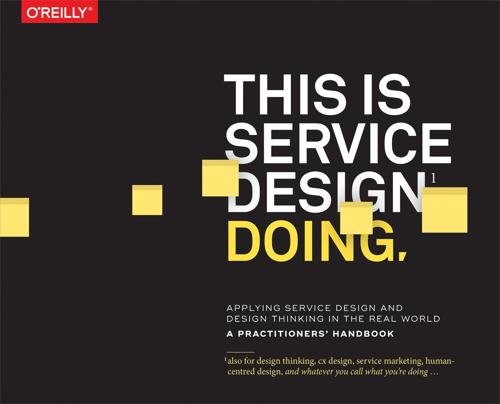
This Is Service Design Doing: Applying Service Design Thinking in the Real World: A Practitioners' Handbook
by
Marc Stickdorn
,
Markus Edgar Hormess
,
Adam Lawrence
and
Jakob Schneider
Published 12 Jan 2018
Even though you will see a lot of process charts and agendas in this book, be very aware that it won’t be enough to simply copy them. Always adapt the process to the people, culture, and goals of the project you are working on. Iterative and adaptive design in a VUCA world The adoption of iterative and adaptive design processes is in no way a fringe phenomenon. It is taking place in major organizations – including the very conservative ones and very pragmatic ones, such as the US military. Faced with an operational context that is increasingly VUCA (volatile, uncertain, complex, and ambiguous), the US Army adopted a new approach in 2010 with its field manual FM 5-0. The manual “is a set of guidelines to be adhered to by military commanders when planning and decision-making for the battlefield.
…
Expert comments _______________________________ Christoph Zürn Francesca Terzi Jamin Hegeman Simon Clatworthy 4.1 In search of a process for designing a service 4.2 Core patterns in the design process 4.2.1 Divergent and convergent thinking and doing 4.2.2 Make sure to solve the right problem before solving the problem right 4.2.3 All design processes are alike... and different 4.3 Introducing the core activities of the TiSDD service design framework This chapter also includes Iterative and adaptive design in a VUCA world Patience, young Padawan, your time will come Adapt and iterate forward, or how to not go in circles Four core activities of the service design process In Search of a Process for Designing a Service In this chapter and the ones that follow, we sketch out a framework that will help you understand the underlying activities and the overall process of designing a service.
…
FM 5-0 is unique, as it is the first time that design – and specifically ‘design thinking,’ the iterative process of problem-solving that is considered by some typical of design – was introduced into the vocabulary of the military field manual.” 1 As our world is cranking out innovations at an unprecedented rate, more and more industries are being shaken up by disruptive shifts. The business world is increasingly described as VUCA – volatile, uncertain, complex, and ambiguous. 2 With that much pressure, you also need to be able to quickly adapt your problem-solving, innovation, and design skills. You need to be flexible and grow with the ever-changing challenges – and so does your process. This book provides a framework for flexible service design process planning.

Frugal Innovation: How to Do Better With Less
by
Jaideep Prabhu Navi Radjou
Published 15 Feb 2015
India, where many innovations have evolved out of necessity to “do more (and better) with less”, can be an important global partner to co-create frugal solutions that benefit all humanity.’ – Nandan Nilekani, Co-founder, Infosys, and former Chairman, Unique Identification Authority of India ‘“Doing more with less” has been the de facto cultural norm in developing economies for ages. These winds of frugal innovation are now blowing westwards in the VUCA (volatile, uncertain, complex, ambiguous) world, a phenomenon very powerfully captured by Radjou and Prabhu in their new book. Not only do the authors provide a compelling case for “frugal innovation” but more importantly provide simple-to-understand and practical mechanisms to deploy this strategy in organizations.’ – Vineet Nayar, Former CEO, HCL Technologies, and Founder, Sampark Foundation ‘Emerging markets have shown that successful innovation must lead to improvements in quality, reduction in cost, making products and services that are easier to use, and be scalable.
…
GAPPAA.ORG Contents GAPPAA.ORG Foreword by Paul Polman, CEO, Unilever Preface 1 Frugal innovation: a disruptive growth strategy The rise of the frugal economy Doing better with less Unusual frugal competitors Conclusion 2 Principle one: engage and iterate A costly and rigid R&D model A market-focused, agile R&D model Back-end innovation: improving execution agility Recommendations for managers Conclusion 3 Principle two: flex your assets The rise of frugal manufacturing Creating a frugal supply chain A frugal services revolution Frugal organisations Recommendations for managers Conclusion 4 Principle three: create sustainable solutions Essential – not optional – sustainability The rise of the circular economy Widening the sharing economy From the circular to the spiral economy Recommendations for managers Conclusion 5 Principle four: shape customer behaviour Three contradictions of contemporary consumption Shaping consumers’ energy use DIY health care Socialising education Breaking (bad) financial habits Recommendations for managers Conclusion 6 Principle five: co-create value with prosumers The rise and rise of the prosumer The rise of the horizontal economy Empowering and engaging prosumers Multiple customer roles Conclusion 7 Principle six: make innovative friends The hyper-collaboration imperative Six ways to hyper-collaborate Getting hyper-collaboration right Conclusion 8 Fostering a frugal culture Evolutionary change The “what”: bold commitment and dynamic goal setting The “how”: adopting disruptive business and mental models The “why”: the foundation of change management Conclusion 9 Conclusion Acknowledgements Notes and sources Index Case studies GAPPAA.ORG 1 SNCF: high-speed innovation 2 Saatchi & Saatchi + Duke: agile advertising 3 Unilever: sustainable solutions 4 Simple Bank: shaping financial behaviour 5 giffgaff: the mobile network run by you 6 Accor: hyper-collaborating without reservation 7 Aetna’s frugal health-care strategy Foreword GAPPAA.ORG by Paul Polman, CEO, Unilever IN A WORLD INCREASINGLY CHARACTERISED AS VUCA – volatile, uncertain, complex and ambiguous – few things are assured. There is one thing however of which we can be relatively certain: that the insatiable demand for ever higher quality products will continue to rise while at the same time the availability of the resources needed to satisfy that demand will remain constrained.
…
It is a total value chain approach, as highlighted in the Unilever case study (see pages 94–7), but one that finds its greatest resonance at the level of our brands, such as Dove, Lifebuoy, Domestos, Knorr, Signal and the many others infused with a strong social mission and deep sense of purpose. To address people’s growing demand for quality, value and purpose, it’s not enough for companies to just do more with less; they must learn to do better with less. Perhaps the greatest insight from this book is the extent to which we are not just living in a VUCA world, but in a world increasingly turned on its head. Traditional business models in the West need to be revisited. Poverty is prevalent today in many parts of Europe. That’s why we need to apply to European markets the principles of frugal innovation that were used to develop more affordable products at key price points for emerging and aspiring markets.
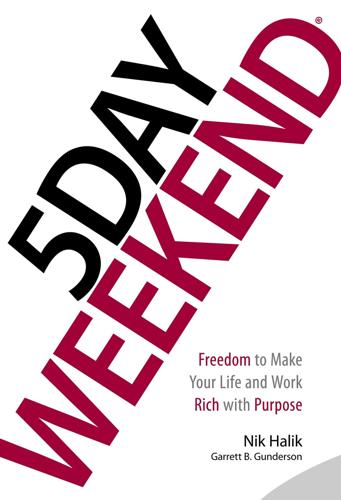
5 Day Weekend: Freedom to Make Your Life and Work Rich With Purpose
by
Nik Halik
and
Garrett B. Gunderson
Published 5 Mar 2018
“The most dangerous risk of all is postponing your dreams and betting you will have the time or freedom to do it later.” —RANDY KOMISAR The risks of employment are becoming more and more evident as conventional retirement plans fail, inflation continues to rise, and markets become riskier as everything moves faster. The acronym VUCA, standing for volatility, uncertainty, complexity, and ambiguity, was created to describe modern times. It’s only going to get worse, and the typical employee mentality simply does not prepare us to adapt and thrive in the current environment. The goal of the 5 Day Weekend is not security, but freedom.
…
Powerball lottery Uber, as entrepreneurial opportunity ultradian rhythms umbrella policies unconscious habits See also habits Upwork.com URLs, as intellectual properties use of investment funds, and business startup investments utility expenses, as tax deduction V value, creating through entrepreneurship and lifestyle (consumptive) expenses and purchase of distressed businesses in real estate investments of your time Van Gogh, Vincent Van Ness, Derick Veterans Administration (VA) vision vision boards VRBO (Vacation Rental by Owner) VUCA (volatility, uncertainty, complexity, and ambiguity) W wage or salary employment and academic systems and Active/Passive Scale and active vs. passive income creation and freedom vs. security preparation for quitting Walden (Thoreau) Wantrepreneurs Watson, Thomas J.
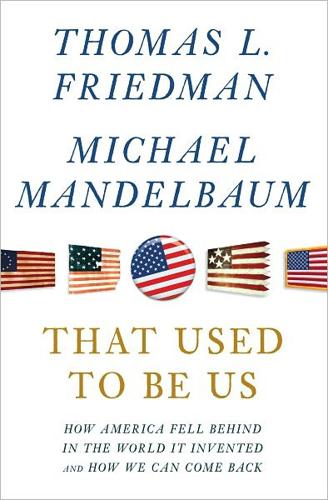
That Used to Be Us
by
Thomas L. Friedman
and
Michael Mandelbaum
Published 1 Sep 2011
In March 2011, the largest earthquake in the recorded history of Japan set off a tsunami that killed more than 22,000 people and devastated entire towns in the northeast part of the country. The tremor and the floods that followed led to dangerous breakdowns in nuclear reactors in the path of the tsunami. There is an acronym that business consultants use to describe moments like these: VUCA, meaning “volatility, unpredictability, complexity, and ambiguity.” We are going through a period of history with a very high VUCA rating. The world is turbulent because it has multiple sources of turbulence: bullying governments, such as China’s; repressed and angry societies, such as those in the Arab world; the forces of nature, which are, as ever, powerful and unpredictable, as the devastation in Japan reminded us; and lone individuals, such as the source of the WikiLeaks cables, empowered—indeed super-empowered—by two of the defining trends of our era: globalization and the IT revolution.
…
Tsinghua University Tucker, Marc Tunisia Turkey Tuscaloosa (Alabama) Tuskegee Airmen 24/7 Customer Twitter Tyler, John U UBS Ukraine Unbound Arts Union of Concerned Scientists United Airlines United Auto Workers (UAW) United Nations; Food and Agriculture Organization; Intergovernmental Panel on Climate Change universal health care Up in the Air (movie) Uruguay USA Network Utah V Valdez, Daniel Vallejo (California) values; erosion of; in military; shared; situational; sustainable Vancouver Velic, Zermina venture capitalists Vertical Transportation Excellence Vest, Charles Veterans Administration (VA) Veterans Affairs, U.S. Department of Vietnam Vietnam War Viniar, David Virginia; colonial; Statute for Religious Freedom Virginia, University of Vivian, James R. Voinovich, George Volcker, Paul Volpe, Ralph von Hippel, Eric VUCA (volatility, unpredictability, complexity, ambiguity) ratings W Wadhwa, Vivek Wagner, Tony Walker, David Wallace, George Wall Street Journal Wall Street Reform and Consumer Protect Act (2010) Washington, D.C.; high-speed train from New York to; public school system; snowy winters in; terrorist attack on, see September 11, 2001; transit system in Washington, George Washington magazine Washington Post Washington Wizards basketball team Watergate scandal Waterloo, Battle of Watts Bar Nuclear Plant Waxman-Markey cap-and-trade bill Weekly Standard Weingarten, Randi Welles, Orson Wellington, Duke of West Alabama Chamber of Commerce Whalen, Bill Whig Party Whitney, Meredith Whole New Mind, A (Pink) Wichita (Kansas) Wiki WikiLeaks Wikipedia Wilde, Oscar Williams, Tennessee Williams College Wilmington (Delaware) Wilson, Woodrow wind power Winklevoss, Cameron and Tyler Wired magazine Wisconsin Wisconsin, University of World Bank World Economic Forum (Tianjin, China; 2010) World Is Flat, The (Friedman) World Series World Trade Center, terrorist attack on, see September 11, 2001 World War I World War II; African American aviators in; economy during; scientific research during; veterans of World Wide Web WTOP radio station X Xi’an (China) Xu, Kevin Young Y Yale–New Haven Teachers Institute Yale University; Law School; School of Forestry and Environmental Studies Ye, Lynnelle Lin Yemen Yeung, Angela Yu-Yun Ying, Lori YouTube Z Zellweger, Renée Zhang Huamei Zhao, Alice Wei Zhou, Linda Zimbabwe Zuckerberg, Mark Zynga A NOTE ABOUT THE AUTHORS Thomas L.

Green Swans: The Coming Boom in Regenerative Capitalism
by
John Elkington
Published 6 Apr 2020
There they were energetically discussing a concept used by military planners to capture an increasingly unpredictable and dynamic world. VUCA refers to an environment of nonstop volatility, uncertainty, complexity, and ambiguity.64 Why, the SU folk were asking, “do so many of us—individually and collectively—fail to imagine, let alone anticipate, the massive and disruptive changes that are unfolding? Driven by fast moving technologies and globalization, the pace of change is accelerating, our brains are struggling to keep up, and surprise, discomfort, and unrest are the result. This is no anomaly. VUCA isn’t going away. Change promises to speed up, not slow down. To thrive in a world where ‘change is the only constant,’ leaders need to replace old thinking with a new framework.”
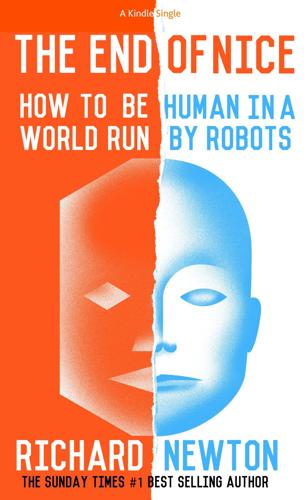
The End of Nice: How to Be Human in a World Run by Robots (Kindle Single)
by
Richard Newton
Published 11 Apr 2015
Don’t be fooled, if you are seeking the novel and the creative then no such precision exists. Being anti-certain is not always comfortable. But heading towards the unknown is the only way to do new things, to change the routine world. It also prepares you for living in a world that is, to borrow a US military expression VUCA. Volatile, uncertain, complex and ambiguous. As a final word, I’d like point out a practice that was once considered certain to prolong love (according to Norman Doidge in The Brain that Changes Itself): “In Elizabethan times, lovers were so enamoured with each other’s body odours that it was common for a woman to keep a peeled apple in her armpit until it had absorbed her sweat and smell.
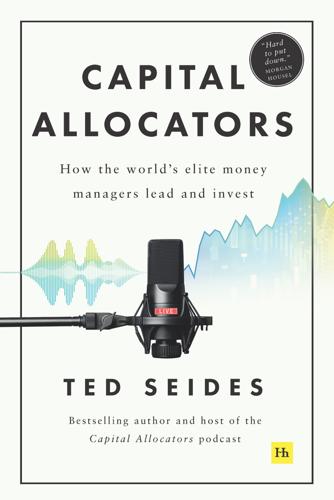
Capital Allocators: How the World’s Elite Money Managers Lead and Invest
by
Ted Seides
Published 23 Mar 2021
The novel coronavirus brought unprecedented challenges in the health and economic welfare of the world.48 CIOs faced work-from-home restrictions for an indefinite period, stock market volatility, and a sudden stop in the global economy. CIOs quickly developed a playbook to lead and manage in the face of uncertainty. Guided by their investment philosophy, CIOs created a strategy on the fly to work through the uncertain time. Mark Baumgartner called upon military acronyms, recognizing a VUCA situation (volatile, uncertain, complex, and ambiguous) that called for an OODA loop (observe, orient, decide, and act). In their own way, a diverse array of CIOs pursued a similar path. Each CIO first adapted to a new work configuration. Online communication became the norm across internal teams, investment committees, and managers.

Leadership by Algorithm: Who Leads and Who Follows in the AI Era?
by
David de Cremer
Published 25 May 2020
It is the development of meta-thinking that makes leaders effective, both because it helps to understand the value of the perspectives that different parties adopt, and to integrate the different perspectives into a comprehensive action plan that makes sense in light of the more general vision. Promote agile thinking Recognizing the value of diverse perspectives is one thing, but one also needs to make effective use of this knowledge. We live in what is often called a VUCA world: volatile, uncertain, complex and ambiguous. Because of the introduction of algorithms in the business world, business has become much more difficult to execute. As a result, leaders need to create a culture where the introduction of new technology is met with a willingness to learn. This kind of learning culture ensures that technical knowledge is constantly distributed in order to optimise cross-functional team work.¹⁹⁸ The skill of being comfortable with change motivates leaders to consider problems and change from different angles.
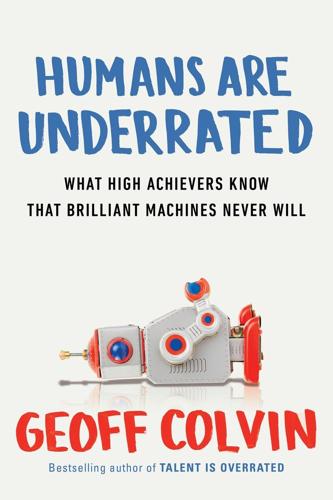
Humans Are Underrated: What High Achievers Know That Brilliant Machines Never Will
by
Geoff Colvin
Published 3 Aug 2015
It has been excellent advice for quite a while . . . http://www.payscale.com/college-salary-report/majors-that-pay-you-back/bachelors. “At the beginning of Iraq and Afghanistan . . .” All quotations from Flynn are from a personal interview with Gen. George Flynn (USMC, Ret.), 18 February 2014. A jarring alert came in 2004 . . . Gen. George W. Casey Jr. (U.S. Army, Ret.), “Leading in a ‘VUCA’ World,” Fortune, 7 April 2014, p. 76. Lieutenant Colonel Chris Hughes was leading a small unit . . . Dan Baum, “Battle Lessons,” New Yorker, 17 January 2005. “Well, I did this . . .” Leonard Wong, “Developing Adaptive Leaders: The Crucible Experience of Operation Iraqi Freedom,” Strategic Studies Institute, U.S.

Rebel Ideas: The Power of Diverse Thinking
by
Matthew Syed
Published 9 Sep 2019
Weather conditions are inherently uncertain. No matter how much planning and preparation you have done, there are unexpected twists and turns. The number of moving parts as conditions morph make huge demands not merely on physical endurance, but cognitive load. Mountaineering is, in this sense, what theorists call a VUCA environment: volatile, uncertain, complex and ambiguous. II Psychologists and anthropologists don’t agree about much, but one thing they do agree upon is the significance of dominance hierarchies. Humans share hierarchies with other primates and, according to the psychologist Jordan Peterson, even lobsters.
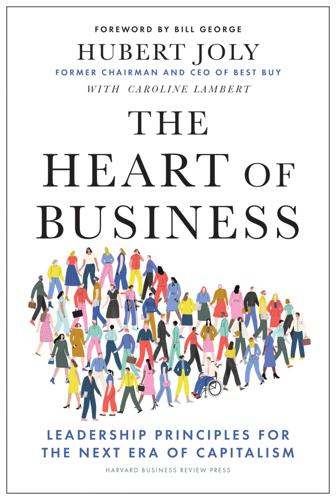
The Heart of Business: Leadership Principles for the Next Era of Capitalism
by
Hubert Joly
Published 14 Jun 2021
Objectively, it is easy to see why work has not been viewed as a good thing.13 In this commonly held view, work is something one does to support one’s real life, which occurs when the workday or workweek is over. Not much fun! A New World—and a Persistent Problem Now our economic environment—and therefore the nature of work—is going through a radical transformation across the world. Call it a fourth revolution or, like General Stanley McChrystal, a VUCA world: volatile, unpredictable, complex, and ambiguous.14 Because of fast-changing technology and evolving social norms, agility, innovation, collaboration, and speed have become more valuable than standardized processes and long-term planning. As a result, the nature of work has changed. The health-damaging physical strain, the Charlie Chaplin kind of mind-numbing repetition, the forklifts running over you, all are declining, as routine tasks get automated.
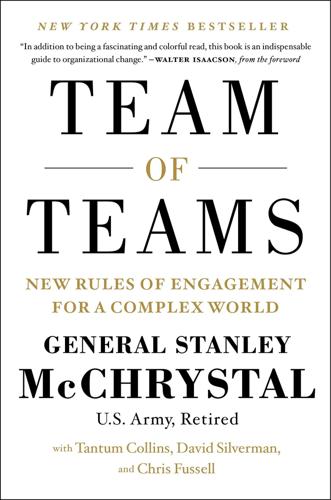
Team of Teams: New Rules of Engagement for a Complex World
by
General Stanley McChrystal
,
Tantum Collins
,
David Silverman
and
Chris Fussell
Published 11 May 2015
Challenges like those faced by aid agencies and the myriad other organizations caught in what author and development consultant Ben Ramalingam dubs “the emergent, wayward swirl generated by social media” create questions about how we confront domains that were once predictable but are no longer. Practitioners wrestling with these questions use slightly different terminology from the optimistic “interconnected.” They use phrases like “discontinuity,” “disruption,” or the recently minted military acronym VUCA (volatility, uncertainty, complexity, and ambiguity). They know that the world in which Emmylou will grow up is not just marginally different from that of previous generations; it is vastly faster and more interdependent, and thus essentially complex in entirely new ways. She lives in the wayward swirl—a totally different place from the clockwork universe.